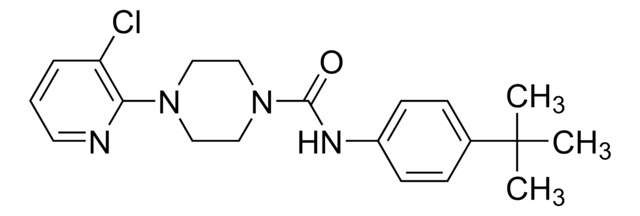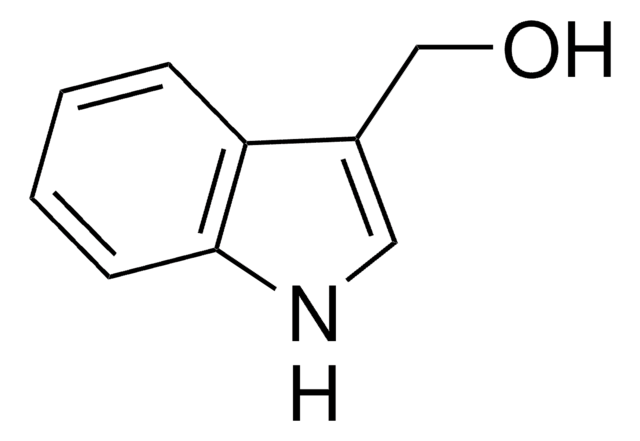SML1600
Rinvanil
≥98% (HPLC)
Sinonimo/i:
(9Z,12R)-12-Hydroxy-N-[(4-hydroxy-3-methoxyphenyl)methyl]-9-octadecenamide, N-Vanillylricinoleamide
Autenticatiper visualizzare i prezzi riservati alla tua organizzazione & contrattuali
About This Item
Formula empirica (notazione di Hill):
C26H43NO4
Numero CAS:
Peso molecolare:
433.62
Codice UNSPSC:
12352200
NACRES:
NA.77
Prodotti consigliati
Livello qualitativo
Saggio
≥98% (HPLC)
Stato
oil
Colore
colorless to yellow
Temperatura di conservazione
2-8°C
Azioni biochim/fisiol
Rinvanil is a Capsaicin analogue that potently activates transient receptor potential vanilloid 1 (TRPV1) channels.
Rinvanil is a Capsaicin analogue that potently activates transient receptor potential vanilloid 1 (TRPV1) channels. Rinvanil induces neuroprotective mild hypothermia in ischemic brain injured mice through TRPV1 activation. Rinvanil exhibits potent anticancer activity in cancer cell lines including cervical (HeLa, CaSKi, ViBo) and leukemia (P388, J774, WEHI-3) cell lines. Rinvanil is not cytotoxic to normal lymphocytes.
TRPV1 (transient receptor potential vanilloid 1) is a capsaicin receptor. It is strongly expressed in sensory neurons and participates in pain perception. In brain, it regulates neuronal function, motor behaviour and neuroinflammation. Capsaicin plays an important role in the activation of TRPV1.
Codice della classe di stoccaggio
10 - Combustible liquids
Classe di pericolosità dell'acqua (WGK)
WGK 3
Punto d’infiammabilità (°F)
Not applicable
Punto d’infiammabilità (°C)
Not applicable
Scegli una delle versioni più recenti:
Certificati d'analisi (COA)
Lot/Batch Number
Non trovi la versione di tuo interesse?
Se hai bisogno di una versione specifica, puoi cercare il certificato tramite il numero di lotto.
Possiedi già questo prodotto?
I documenti relativi ai prodotti acquistati recentemente sono disponibili nell’Archivio dei documenti.
Jin H Nam et al.
Brain : a journal of neurology, 138(Pt 12), 3610-3622 (2015-10-23)
Currently there is no neuroprotective or neurorestorative therapy for Parkinson's disease. Here we report that transient receptor potential vanilloid 1 (TRPV1) on astrocytes mediates endogenous production of ciliary neurotrophic factor (CNTF), which prevents the active degeneration of dopamine neurons and
Katy A Freed et al.
Journal of medical genetics, 48(8), 563-566 (2011-05-07)
Cystinosis is an autosomal recessive disease characterised by the abnormal accumulation of lysosomal cystine. Mutations in the cystinosin gene (CTNS) represent known causes for the disease. The major cystinosis mutation is a 57 kb deletion on human chromosome 17p13 that
Il team dei nostri ricercatori vanta grande esperienza in tutte le aree della ricerca quali Life Science, scienza dei materiali, sintesi chimica, cromatografia, discipline analitiche, ecc..
Contatta l'Assistenza Tecnica.








